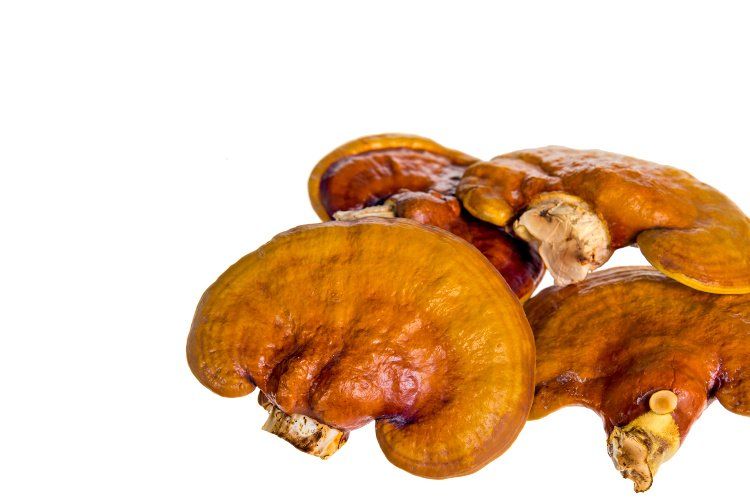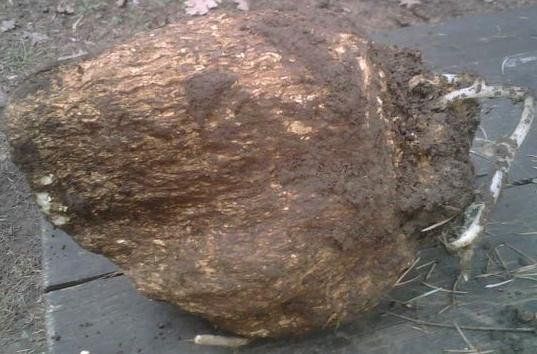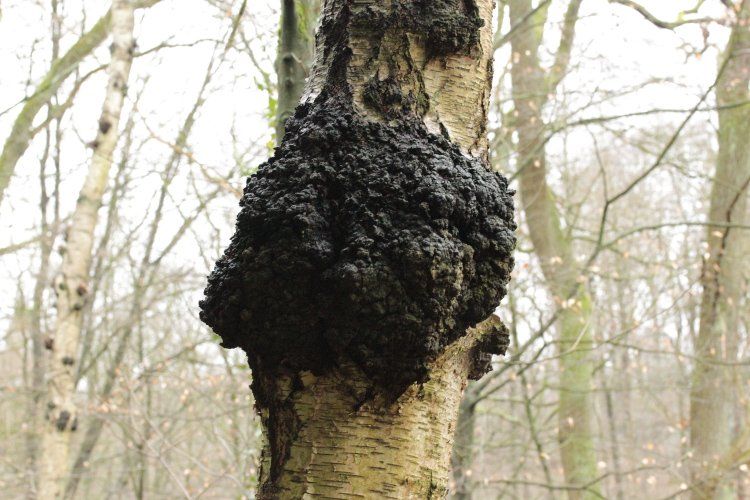Medicinal mushrooms are skyrocketing: poria, reishi, chaga, wood ear, lion’s mane, and more
As mushroom-product sales skyrocket globally, here is a look at some of the biggest players.
Photo © AdobeStock.com/kdshutterman

Almost a century’s passed since pioneering Scottish scientist Alexander Fleming realized that a fungal contaminant on a laboratory petri dish was churning out a substance rife with antibacterial properties-a substance we now call penicillin.
Even then he was but one in a long line of inquiring minds-scientific, civilian, and otherwise-to recognize the health-promoting potential of fungi. That potential is under a whole new spotlight as a stream of studies corroborates medicinal mushrooms’ mind-body benefits, and as consumers tune in to the apparent magic of functional fungi.
From Asia with Love
According to Paul Schulick, founder and CEO, For The Biome (Dummerston, VT), there’s nothing magic about it. “Rather,” he says, “5,000 years of honing their innate survival skills has garnered medicinal mushrooms a position of high honor among natural medicines. Mushrooms are poised to become the new probiotics. We’re on the verge of a medicinal mushroom renaissance.”
That’s an ambitious prediction, but mushrooms’ hallowed reputation in traditional Chinese medicine (TCM) suggests it may be warranted.
“In Asia through the millennia,” Schulick explains, “medicinal mushrooms have represented a primary health resource-and today, a multibillion-dollar market. To say that healing mushrooms have always been the go-to choice for health and wellness throughout Asia is no exaggeration; what’s different now is that the U.S. market is waking up to mushroom wisdom, creating a competitive, burgeoning category that’s growing by leaps and bounds.”
Josh Beaty, marketing director for NuLiv Science USA Inc. (Brea, CA), whose company offers a full portfolio of mushroom ingredients under the brand name Prime, agrees: “Our industry has known for quite some time about the benefits of mushrooms. The evidence is strong enough that a number of countries officially use (from their ministry of health) certain mushroom extracts for immunotherapy. We are seeing increased awareness among consumers. One only needs to look at search volumes on Google and Amazon. For instance, searches for cordyceps have doubled on Amazon within the last 12 months. Some of this upward trend is ‘hip;’ some of it is niche and medicinal in nature.”
No Longer Niche
Consider that Technavio’s Global Medicinal Mushroom Market 2018 to 2022 report forecasts growth for the sector as high as $13.88 billion, with 39% of that occurring solely in the Americas.1
Michelle Gillespie, NTP, natural insights analyst, SPINS (Chicago), says SPINS sales data for the 52 weeks ending May 19, 2019, show solid growth in all U.S. channels for products featuring functional mushrooms. While natural-channel sales grew most at 29.7%-hitting $22 million-“mushrooms picked up speed quickly as they made their way into the conventional multi-outlet channel with triple-digit growth of 174.3% to $3.1 million,” she says.
In other words, “Mushrooms are on their way to becoming a major trend,” concludes Sandra Carter, founder, Om Mushrooms (Carlsbad, CA). “Although they’ve been on the fringe in the past, we’re seeing our products appearing in both natural and conventional channels with very impressive, consistent turns.”
Brien Quirk’s witnessed similar interest. “We see customer inquiries for mushroom extracts in formulations and functional foods increasing even more this year, with year-over-year increases for the last four or five,” says the director of R&D at Draco Natural Products (San Jose, CA). While he doubts mushrooms will reach probiotics’ heights, “They do have permanence and show numerous applications and benefits,” he says.
The Right Remedy at the Right Time
Among those benefits is stress mitigation, “which in ancient times was literally tied to basic survival,” Schulick points out. Though contemporary stressors-device fatigue, environmental assaults, sedentary lifestyles-are less acute, their chronic toll means that “current culture still needs those adaptogens,” Schulick continues. That makes functional mushrooms the right remedy at the right time.
“A combination of some very compelling research, growing awareness of mushrooms as effective superfood boosts, and broader availability of trusted products make it easy for consumers to add mushrooms to their daily routines,” Carter adds. “I also feel that with the rise of plant-based eating, consumers have a heightened curiosity about looking to nature for health and nutrition.”
And genetically speaking, mushrooms may be more like us than we thought. “Our internal structures and the ways in which we process oxygen are very similar,” Schulick says. “We see evidence of this biocompatibility in the harmonious way our bodies respond when mushrooms are applied topically.”
Carter agrees. “Because mammal DNA is more closely related to mushroom DNA than to that of plants, it makes sense that many of the disease-fighting and wellness-promoting powers that mushrooms evolved for themselves would turn out to be beneficial for us, too.”
To Your Health
Nutritionally, functional mushrooms all boast prebiotic fiber-great for the microbiome-and antioxidants to combat free radicals. But individual species have unique functional properties that, says Carter, “work with our bodies to support immunity, energy, sports performance, recovery, cognitive health, and overall health and wellness.”
For instance, immune support often drives consumers to mushrooms like shiitake (Lentinula edodes), chaga (Inonotus obliquus), and reishi (Ganoderma lucidum)-the last of which saw sales grow 47.2% to $9.9 million over the 52 weeks ending May 19, 2019, per SPINS. Other trending benefits include cognitive and brain support-frequently attributed to lion’s mane (Hericium erinaceus)-and the purported metabolic benefits of oyster mushroom (Pleurotus genus).
Skin Deeper
Schulick is excited about mushrooms’ “cutting-edge applications for the ‘third brain’”-that is, the skin. The body’s largest organ, the skin “is an extension of the human microbiome,” he says, “and an underused therapeutic gateway for whole-body wellness, as well as for beautification and anti-aging.”
An review article in the journal Cosmetics2 titled "Mushroom cosmetics: the present and future" highlights a who’s-who of popular mushroom beauty products with antioxidant, anti-inflammation, anti-wrinkle, skin-whitening, moisturizing, and collagen- and elastin-supporting benefits, he notes, adding that “with baby boomers seeking ways to stay younger in mind and body, they’ll readily embrace skin-based delivery methods for enhancing youth and beauty, health, and wellness.”
In fact, For the Biome recently collaborated with Om Mushrooms to develop a line of fungi-based skincare products that leverage chaga, reishi, lion’s mane, maitake (Grifola frondosa), and king trumpet (Pleurotus eryngii) mushrooms to “deliver benefits through dermal application that consumers haven’t been getting from other medicinal mushroom products in the past,” Schulick says.
Tackling the Big C
Aiming even higher, Quirk points to scientific findings that hint at a role for functional mushrooms in tackling cancer.
As Quirk notes, studies show that “mushrooms have very powerful effects by triggering the immune system to attack cancer cells.” Credit goes largely to mushroom polysaccharides-especially beta-glucans, large and complex molecules that mimic the polysaccharides found on bacterial cell walls and thus trigger an immune response similar to what the body would mount were it subject to outside attack. Reishi, turkey tail, Agaricus blazei murrill, and shiitake are all generating particular interest here, Quirk says.
Coming Attractions
Quirk adds that functional mushrooms are appearing in applications across platforms-and especially in drinkable options like smoothies, beverages, and beverage mixes.
Gillespie is bullish on beverages, too. While SPINS still tracks herbal supplement formulas as the top mushroom-containing segment, “beverages are catching up quickly,” she says. “Medicinal mushrooms are a natural fit in both ready-to-drink and powdered teas, coffee substitutes, and hot cocoa mixes, adding functional benefits and an earthy flavor.”
Other applications won’t be far behind. As Quirk says, “I think the growth of mushrooms use in products will continue at its current fast pace. There are literally thousands of studies that have been done-and hundreds more every year that’ll help improve our understanding of their benefits.”
Click through the following pages to see what that science says about marquee mushroom varieties.
References
1. Technavio. “Global Medicinal Mushroom Market 2018 to 2022” report. Published October 2018. Accessed at: https://www.technavio.com/report/global-medicinal-mushrooms-market-analysis-share-2018?utm_source=t10&utm_medium=bw_wk45&utm_campaign=businesswire
2. Yuanzheng W et al. “Mushroom cosmetics: The present and future.” Cosmetics. Published online July 8, 2016. Accessed at: https://www.mdpi.com/2079-9284/3/3/22/html
Photo by Jatlas2/Wikimedia Commons/CC-BY-SA-1.0

Poria (Poria cocos)
Poria mushroom-which goes by a litany of aliases including bai fu ling, fu ling, China-root, Indian bread, hongos poria, matsuhodo, and more-is a high-profile mushroom in TCM. Quirk notes its moderating effects on anxiety and sleeplessness, as well as its “very strong effects as a diuretic and for digestive problems.”
Curiously, poria is not a fruiting body-as are most familiar mushrooms-but rather a “large, solid underground white mass almost like a tuber” called a sclerotium, Quirk says.
Photo © iStockphoto.com/luknaja

Reishi (Ganoderma lucidum)
Practitioners of TCM know reishi as lingzhi and use it as “a Shen, or spirit, tonic for tranquilizing the mind,” Quirk says.
The variety has a vast body of science supporting it, including noteworthy research into its beta-glucans, which Carter notes may strengthen weak immune function on one hand, while moderating an overactive immune response on the other.
“Reishi is also known for its cardio-protective properties,” Carter says, “including regulation of blood pressure and cholesterol. And its adaptogenic properties have made this mushroom popular with people who find it helps them manage stress.”
Photo by Björn S.../Wikimedia Commons/CC-BY-SA-2.0

Chaga (Inonotus obliquus)
Folk healers not just in China but in Russia and Eastern Europe, as well, turn to chaga mushroom to address cardiovascular disease, diabetes, and even gastrointestinal cancer. Its actives exhibit antioxidant, antiviral, and anti-tumoral capacities, Quirk says, with those in the last group able to arrest cancer cells in the G0/G1 phase and then induce cell apoptosis or differentiation.
On a lighter notes, “The cellular-protective, antiaging research on chaga makes it particularly appealing for beauty-related products,” Carter says.
Photo by 트리오구/Wikimedia Commons/CC-BY-SA-3.0

Wood ear (Auricularia auricula-judae)
You may be familiar with wood ear-also known as black fungus-as a favorite ingredient in Asian cuisines, but as Quirk says, this edible mushroom is “tasty, nutritious, and medicinal.”
Evidence hints at its ability to reduce blood pressure and cholesterol levels, which explains why it’s often prescribed to patients diagnosed with atherosclerosis, coronary heart disease, and thrombosis.
“It improves blood fluidity and treats bruises and hemorrhoids,” Quirk adds. And as a rich source of hydrophilic polysaccharides, it eases dryness of the throat and mouth-perfect for that nagging cough-and may also “moisten the blood and promote circulation, counteracting the effects of dryness on various health symptoms.”
Photo © Shutterstock.com/Khumthong

Lion’s mane (Hericium erinaceus)
“Lion’s mane is a mushroom that’s gained wide appeal across a large age demographic-from Millennials to boomers,” Carter says. “Known for its ability to help with cognitive and nerve function, it has research related to supporting memory, focus, and mood.”
Quirk agrees, adding that studies back up its memory-enhancing and antidepressant effects, identifying bioactives known as hericenones that stimulate nerve growth factor in the brain to regenerate neurons.
Known as hou tou gu in TCM and yamabushitake in Japanese, lion’s mane is also edible.
Photo by INeverCry/Wikimedia Commons/CC-BY-SA-2.0

Turkey tail (Trametes versicolor)
Carter says there’s “tremendous research” on turkey tail-and again, signs point to its polysaccharides as the responsible parties.
“Their polysaccharides are related to immune support and function in both humans and animals with significant illness such as cancer,” Carter says. With attention increasingly turning to the cancer-fighting potential of our own immune systems, “mushrooms such as turkey tail can play a role as adjunct therapies to strengthen this and be a tool for prevention and recovery,” she believes.
Photo by Katja Schulz/Wikimedia Commons/CC-BY-SA-2.0

Oyster mushroom (Pleurotus genus)
Sure, they’re great in stir-fries and soups, but oyster mushrooms also demonstrate “potent cholesterol- and triglyceride-lowering effects, anti-diabetic and blood-sugar-regulating effects, liver health benefits, and anti-inflammatory effects,” Quirk says.
Bioactives called monacolins-also found in red yeast rice-lipids, sterols, vitamins, oligo- and polysaccharides, amino acids, peptides, and even some enzymes all apparently contribute to oyster mushrooms’ efficacy.
And studies have shown that 100 mg of oyster-mushroom beta-glucan helps preserve natural killer cells in a population of athletes following strenuous exercise over two months, and reduced upper respiratory tract infections in 50 athletes undergoing heavy physical training, Quirk says. “And for liver support, oyster mushroom extract protects against liver toxicity from carbon tetrachloride and maintains liver enzymes to near normal.”























